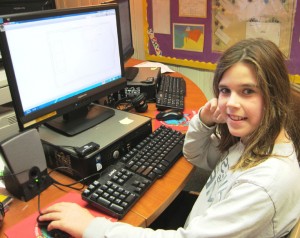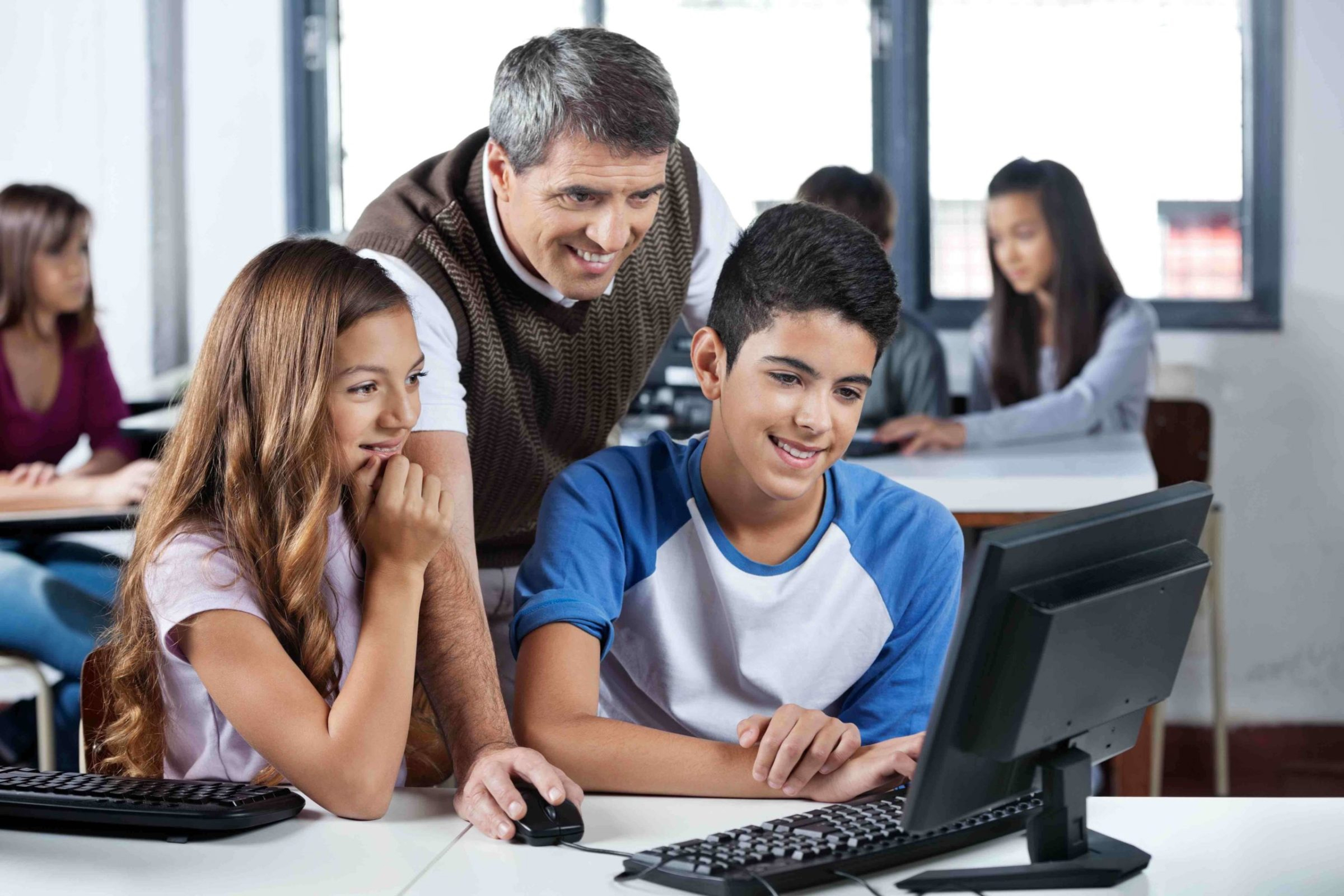
Not so long ago, many schools throughout the nation banned the use of social media on their website portals, finding censorship an easier solution than coping with the new technology. Regardless, social media acquired widespread popularity. And now, many school districts are formulating guidelines for acceptable usage by students and teachers alike.
As a strong advocate of using social media in education, I feel that the responsibility becomes more than just guidelines. Districts need to offer training in its proper, safe, and ethical use, as mandated by the federal Broadband Data Act for teaching online safety. Young people must receive sound modeling practices while they make their way through the primary grades and be educated in how to use social media safely, as early as the 5th grade. This way, by the time they reach thirteen, they will have acquired the moral and ethical parameters needed to independently engage in its use.
Thus, school systems are now asking, “What are safe practices in social media?” Working with students and teachers, I find that a discussion of protective measures and  awareness in safety is necessary. Youngsters need awareness that their practices in social media can have an impact on their lives, their future, and the lives of others. They need education on how to protect themselves in reputation and character while engaging in social media. And discussions should be explored as to how their postings can reflect being responsible and ethical. As we all know, we tend to practice the way we were taught; so teachers need to model these safe social media practices using sound platforms throughout the students’ education. And lastly, this is a task for parents and schools alike, both cooperating and working together. So let’s explore these issues:
awareness in safety is necessary. Youngsters need awareness that their practices in social media can have an impact on their lives, their future, and the lives of others. They need education on how to protect themselves in reputation and character while engaging in social media. And discussions should be explored as to how their postings can reflect being responsible and ethical. As we all know, we tend to practice the way we were taught; so teachers need to model these safe social media practices using sound platforms throughout the students’ education. And lastly, this is a task for parents and schools alike, both cooperating and working together. So let’s explore these issues:
1. We need protective measures to engage in safe practices in social media.
Schools need to offer a sound curriculum in protective measures of social media that is methodical and practical. Let’s choose wisely rather than rely on learning bits and pieces or possibly incorrect information from friends. Issues such as online predators, cyberbullying, harassment, scams, chat rooms, identity theft, and social networking are just a few of the areas needing coverage.
2. Social media practices have an impact on the rest of students’ lives.
In my previous blog post on Facebook, we examined how people’s postings are not only traceable but accountable. Social media is a public forum; it is not email. We all learned from the experience of Olympian swimmer and gold medalist Michael Phelps, who was shown on someone else’s post doing drugs at a party. This lapse of judgment cost Phelps the loss of valuable endorsements. Social media is not the place to publicize using drugs, to bully other young people, or to engage in sex and gender harassment. These actions can impact later on in adulthood and result in unpleasant consequences.
3. Learn how to protect your reputation and character while engaging in social media.
It is easy for students to be lured into unknown relationships on the web. For what reasons should people trust you? What are the indicators that you may not be presenting yourself honestly? For what reasons should students expose little about their private lives? If they know the answers, then why are they surprised when others use that information against them? These are only a few of the reasons that education in safe social media practices should be mandatory.
4. Student engagement in social media should be responsible and ethical.
As students become more independent, they may choose to join various clubs and organizations. They may list their profile on a dating service. So, knowing that their online platforms are traceable and transparent, what should their postings look like? How should they present themselves as responsible and ethical individuals? I don’t mind the transparency because the more open we are as a society, the healthier we are.
5. Teachers should model safe practices in social media and use sound platforms in the classroom.
From kindergarten upwards, teachers can share their thoughts behind why they post or upload items into social media. They should make students aware of the reasoning, integrating the safe practices, and continually holding discussions on how the public or parents will view their posts. At this stage of development, we need to help children view their postings objectively, rather than from their own viewpoints.
School systems can research different platforms and decide which they may want to encourage. The choices are endless, from classrooms having Facebook or Twitter pages, using social bookmarking platforms such as Delicious, enticing parents to consider using or purchasing products for a school fair on Pinterest, drafting their reflections on Blogger or WordPress, or showcasing their photos of class trips on Flickr or Shutterfly, Tumblr, etc.
6. It is necessary for schools and parents to participate in educating their children in social media.
By the time students can establish their own Facebook page, they will be 13. As teenagers enter high school, communication with parents decreases. This is normal, as kids begin to question their identity and become more independent. Sometimes at this stage, it’s almost impossible to get children to share their lives with their parents. School districts might decide to invest in curricula, such as Sunburst’s Protecting Students in the 21st Century (PS21C) in order to educate everyone, from the administrators to the students, and to offer workshops to parents through the PTA. PS21C conforms to the federally mandated Broadband Data Act for teaching online safety.
Why can’t parents train their children by themselves? Well, sometimes it becomes easier to reach children through their teachers, the objective ones. We are at a place historically where children may know more about technology than their parents, who may not even be on social media. Schools and parents must collectively work together to make sure that the laws are honored and students do not take out accounts with false identities. Parents along with the teachers have to continue to review the lessons from their workshops in social media.
My daughter once asked me, “When will I be old enough to live independently?” I answered her, “When you hear my voice in your head.” So too, with social media.
© 2012 Andi Stix, Ed.D.
![]() Describe some lessons that come to mind where you can integrate safe social media practices. For what reasons do children often think they are invulnerable until it is too late?
Describe some lessons that come to mind where you can integrate safe social media practices. For what reasons do children often think they are invulnerable until it is too late?
Andi Stix is an educational consultant & coach who specializes in differentiation, interactive learning, writing across the curriculum, classroom coaching, and gifted education. For further information on her specialties or social media, please email her on the Contact page.





